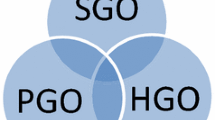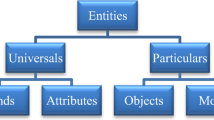Abstract
Much of the information that we use is geospatially referenced. The need for homogeneous representation of global geographic themes is recognised as critical for sustainable development goals. The richness of local geographic data created and maintained by individual countries vary widely, creating what is known as a geospatial digital divide. Attempts to bridge this divide include the adoption of Discrete Global Grid Systems that provide an abstract and uniform method of partitioning space on Earth. This paper considers how the local methods of partitioning space adopted in individual countries and provided as open data can be integrated with this global grid system. The paper proposes a novel ontology design pattern for representing the integration of both grid systems, and evaluates it against existing methods. It is shown how a uniform treatment of spatial semantics is used to represent geographic places across grid systems. This proposal is a step towards the effective utilisation of these grid systems in building global geographic information systems.
Access this chapter
Tax calculation will be finalised at checkout
Purchases are for personal use only
Similar content being viewed by others
References
https://docs.ogc.org/as/15-104r5/15-104r5.html#7: Open geospatial consortium. topic 21: Discrete global grid systems abstract specification (2017)
Bondaruk, B., Roberts, S.A., Robertson, C.: Assessing the state of the art in discrete global grid systems: OGC criteria and present functionality. Geomatica 74, 9–30 (2020). https://doi.org/10.1139/geomat-2019-0015
Brinks, J.: Database of global administrative boundaries (GADM) (2018)
Brodsky, I.: H3: Uber’s hexagonal hierarchical spatial index (2018)
ISO: Geographic information - discrete global grid systems specifications part 1: Core reference system and operations, and equal area earth reference system (2024)
Janowicz, K., et al.: Know, know where graph: a densely connected, cross-domain knowledge graph and geo-enrichment service stack for applications in environmental intelligence. AI Mag. 43, 30–39 (2022)
Janowicz, K., Hizler, P., Schildhauer, M., Li, W., Rehberger, D.: https://stko-kwg.geog.ucsb.edu/static/schema/figures/integrated-schema-diagram.png (2024)
Kmoch, A., Matsibora, O., Vasilyev, I., Uuemaa, E.: Applied open-source discrete global grid systems. AGILE: GIScience Ser. 3, 1–6 (2022). https://doi.org/10.5194/agile-giss-3-41-2022
Li, M., Stefanakis, E.: Geospatial operations of discrete global grid systems-a comparison with traditional GIS. J. Geovisualization Spatial Anal. 4 (2020). https://doi.org/10.1007/s41651-020-00066-3/Published
United nations integrated geospatial information framework (2024)
ODPA: Ontology design patterns (2022), https://ggim.un.org/UN-IGIF/part1.cshtml
Shimizu, C., et al.: A pattern for features on a hierarchical spatial grid, pp. 108–114. Association for Computing Machinery (2021). https://doi.org/10.1145/3502223.3502236, http://ontologydesignpatterns.org/wiki/Main_Page
Yates, D., Keller, J., Wilson, R., Dodds, L.: The UK’s geospatial data infrastructure: challenges and opportunities. Open Data Institute (2018)
Zalewski, J., Hitzler, P., Janowicz, K.: Semantic compression with region calculi in nested hierarchical grids, pp. 305–308. Association for Computing Machinery (2021). https://doi.org/10.1145/3474717.3483965, https://theodi.org/insights/reports/geospatial-data-infrastructure-report/
Author information
Authors and Affiliations
Corresponding author
Editor information
Editors and Affiliations
Rights and permissions
Copyright information
© 2025 The Author(s), under exclusive license to Springer Nature Switzerland AG
About this paper
Cite this paper
Abdelmoty, A.I., Satoti, A. (2025). A Homogeneous Approach to Reasoning Over Global Geographic Data. In: Bramer, M., Stahl, F. (eds) Artificial Intelligence XLI. SGAI 2024. Lecture Notes in Computer Science(), vol 15446. Springer, Cham. https://doi.org/10.1007/978-3-031-77915-2_20
Download citation
DOI: https://doi.org/10.1007/978-3-031-77915-2_20
Published:
Publisher Name: Springer, Cham
Print ISBN: 978-3-031-77914-5
Online ISBN: 978-3-031-77915-2
eBook Packages: Computer ScienceComputer Science (R0)




